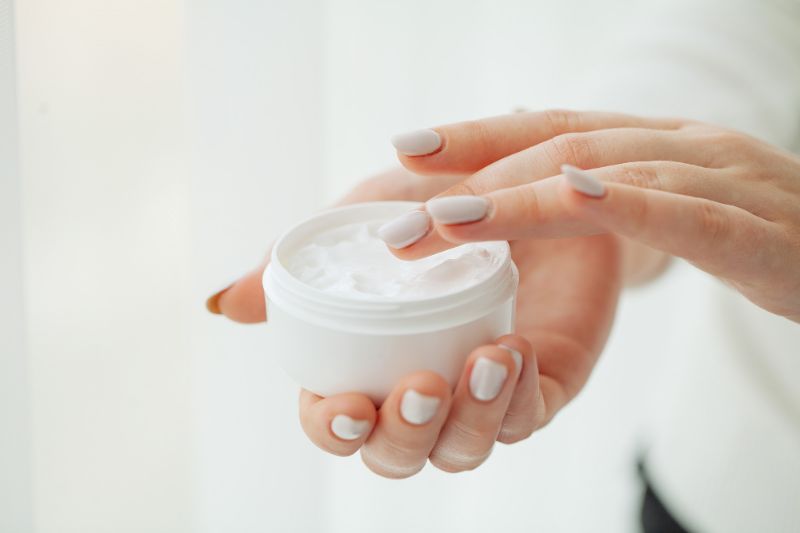Are you tired of battling perioral dermatitis, the skin issue often mistaken for acne? Welcome to your comprehensive guide on how to conquer this challenging condition and regain clear, healthy skin. In the following sections, we’ll uncover the causes, symptoms, and highly effective treatment strategies for perioral dermatitis, shedding light on its connections with related skin conditions like eczema, contact dermatitis, and rosacea. Whether you’ve been fighting this battle for a while or just encountered it, you’re not alone in your journey. So, let’s dive into the world of perioral dermatitis and empower you with the knowledge and tools you need for radiant, clear skin.
What is Perioral Dermatitis?
Perioral dermatitis is a dermatological condition that presents with the distinctive appearance of small, red bumps and pimple-like lesions primarily affecting the areas around the mouth. However, it doesn’t restrict itself to this region alone; it can also extend its presence to the nose and, at times, the delicate skin around the eyes. While its visual characteristics might occasionally lead to its misidentification as acne, it’s essential to understand that perioral dermatitis is a distinct entity with its unique features and underlying causes.
Perioral Dermatitis Causes
Perioral dermatitis is a skin condition with a complex interplay of factors that contribute to its development. Understanding the root causes is critical for successful management and prevention.
The exact cause of perioral dermatitis remains somewhat elusive, but several key factors have been identified:
- Topical Steroid Use: One of the primary triggers for perioral dermatitis is the prolonged use of topical steroids, such as hydrocortisone creams. Ironically, these creams, meant to treat skin conditions, can actually induce perioral dermatitis when used for extended periods.
- Harsh Skincare Products: The use of skincare products containing irritants or heavy emollients can disrupt the skin’s natural barrier. This disruption can lead to inflammation and the development of perioral dermatitis.
- Fluoride in Toothpaste: Fluoride, an ingredient commonly found in toothpaste, has been associated with perioral dermatitis, particularly when it comes into contact with the skin around the mouth. Switching to fluoride-free toothpaste is often recommended.
- Hormonal Factors: Hormonal fluctuations, particularly in women, can play a role in perioral dermatitis. This is why it’s more prevalent in females and can sometimes flare up during pregnancy or with the use of birth control pills.
- Environmental and Genetic Factors: A combination of environmental triggers and genetic predisposition can also contribute to perioral dermatitis. A family history of the disease may increase your chances.
Perioral Dermatitis Symptoms
Perioral dermatitis manifests with distinctive and often discomforting symptoms:
- Red, Bumpy Rash: The hallmark symptom is a red, bumpy rash that typically appears around the mouth. This rash can extend to the nose and eyes, creating a distinct butterfly-like pattern.
- Pimple-Like Bumps: Small, pimple-like bumps known as papules can develop within the rash area, giving the skin a rough texture.
- Itching and Burning: Perioral dermatitis is often accompanied by itching and a burning sensation, making it not only unsightly but also uncomfortable.
- Dry or Flaky Skin: In some cases, the skin may become dry or flaky, adding to the discomfort and appearance of the condition.
Recognizing these symptoms is the first step in seeking proper diagnosis and treatment for perioral dermatitis.
Perioral Dermatitis Treatment Strategies
Treating perioral dermatitis is not a one-size-fits-all endeavor. To effectively combat this skin condition, a personalized approach is crucial. Here, we outline various strategies to consider in your quest for clear, healthy skin.
- Professional Guidance
The first step in managing perioral dermatitis is seeking professional guidance. A dermatologist can accurately diagnose your condition, ensuring you’re on the right treatment path. This personalized approach takes into account your unique skin type, symptoms, and medical history.
- Topical Treatments
Topical treatments are often the initial line of defense against perioral dermatitis. Your dermatologist may recommend antibiotic creams, such as metronidazole or clindamycin. These creams target the inflammation and redness associated with the condition. Following your dermatologist’s instructions is crucial to maximize their effectiveness.

- Oral Medications
Oral medications may be prescribed in more severe cases. Tetracycline and doxycycline are commonly used antibiotics that work from within to tackle the root causes of perioral dermatitis. These medications are generally taken for several weeks or months under your doctor’s supervision.
- Skincare Routine
A gentle skincare routine is essential in preventing perioral dermatitis flare-ups. Opt for mild, fragrance-free cleansers and moisturizers. Avoiding harsh or scented products can significantly improve your skin’s condition over time.
Perioral Dermatitis and Its Relations
Understanding how perioral dermatitis relates to other skin conditions is vital in managing your skincare routine effectively.
Perioral Dermatitis vs. Acne
Perioral dermatitis and acne may share some visual similarities, but they have different causes and require different treatments. While acne often involves the clogging of hair follicles, perioral dermatitis is more related to inflammation and irritants. Distinguishing between the two is crucial for proper management.
Perioral Dermatitis and Eczema
Eczema is another common skin condition that can coexist with perioral dermatitis. Managing both conditions can be challenging, as they may exacerbate each other. Proper skincare, gentle products, and medical guidance can help individuals dealing with this dual challenge.
Contact Dermatitis and Perioral Dermatitis
Contact dermatitis, whether allergic or irritant, can exacerbate perioral dermatitis or even trigger its development. Identifying and avoiding the substances or products that cause contact dermatitis is essential for managing perioral dermatitis effectively.
Rosacea and Perioral Dermatitis
Rosacea is a skin condition that causes facial redness and visible blood vessels. It can often be mistaken for perioral dermatitis due to their overlapping symptoms. Understanding the differences between these conditions and seeking professional advice is crucial for accurate diagnosis and treatment.
Perioral Dermatitis Prevention Tips
Now that we’ve covered the basics, let’s dive into some practical tips to help you win the battle against perioral dermatitis and related skin issues.
Gentle Skincare Routine
Maintaining a gentle skincare routine is essential. Opt for mild, fragrance-free cleansers and moisturizers, as harsh or scented products can aggravate perioral dermatitis, making symptoms worse.
Avoid Trigger Foods
Certain foods, such as spicy dishes or those high in processed sugars, can trigger flare-ups. Identifying your personal triggers and avoiding them can significantly improve your skin’s condition and minimize the chances of aggravating perioral dermatitis.
Stress Management
Stress can exacerbate perioral dermatitis and related conditions like rosacea. Implement stress-reduction techniques like yoga, meditation, or deep breathing exercises to keep your skin calm and clear, reducing the impact of stress on your skin.

Stay Hydrated
Proper hydration is crucial for healthy skin. Drinking enough water helps maintain your skin’s moisture balance, reducing the likelihood of flare-ups and ensuring your skin remains adequately hydrated.
Sun Protection
UV rays can worsen skin conditions. Always apply sunscreen with high SPF when going out to shield your skin from harmful sun exposure, which is especially important when dealing with perioral dermatitis.
Final Thoughts
In conclusion, the journey to clear and healthy skin, especially when dealing with perioral dermatitis and its related conditions, is both a challenge and an opportunity for personal growth. By understanding the causes, symptoms, and effective treatment strategies, you’re well-equipped to navigate this complex battle.
The key lies in personalized care and professional guidance. Seek help from a dermatologist who can tailor a treatment plan to your unique needs, whether that involves topical treatments, oral medications, or lifestyle adjustments. By maintaining a gentle skincare routine, identifying and avoiding triggers, managing stress, staying hydrated, and protecting your skin from the sun, you can fortify your defense against perioral dermatitis and related skin issues. Remember, knowledge is power, and your journey towards clear, radiant skin is a testament to your resilience and commitment. By taking the steps outlined in this comprehensive guide, you’re well on your way to conquering the perioral dermatitis battle and enjoying the beauty of clear, healthy skin.
FAQs
- Is perioral dermatitis the same as acne?
While they share some similarities, perioral dermatitis and acne have different causes and require distinct treatments.
- What is the connection between fluoride in toothpaste and perioral dermatitis?
Fluoride in toothpaste, when it comes into contact with the skin around the mouth, has been associated with perioral dermatitis.
- Is perioral dermatitis more common in women?
Yes, hormonal fluctuations, often more prevalent in females, can play a role in perioral dermatitis.
- How can I prevent perioral dermatitis flare-ups?
A gentle skincare routine with fragrance-free products and avoiding trigger foods are key prevention strategies.
